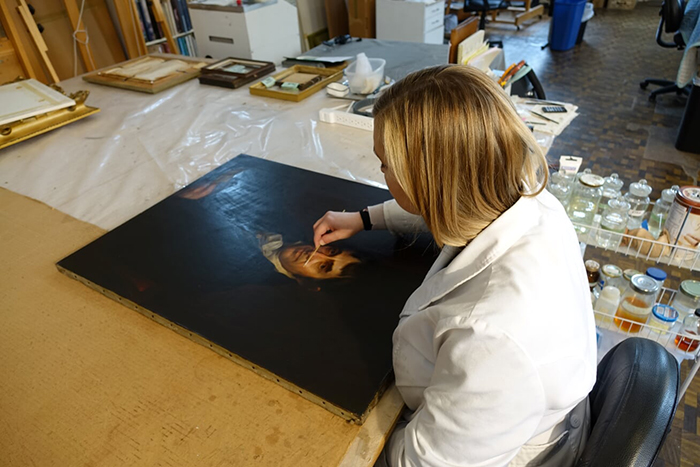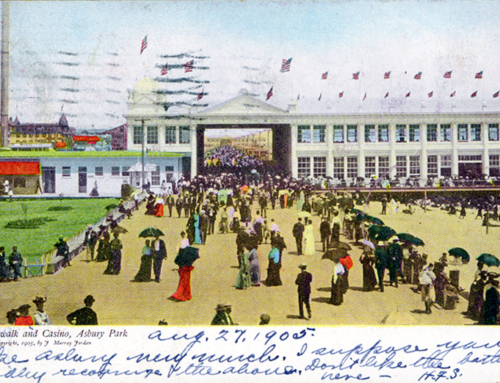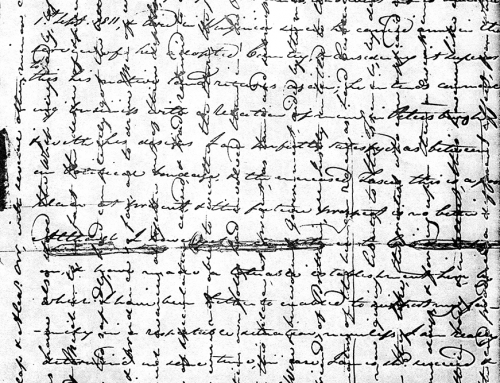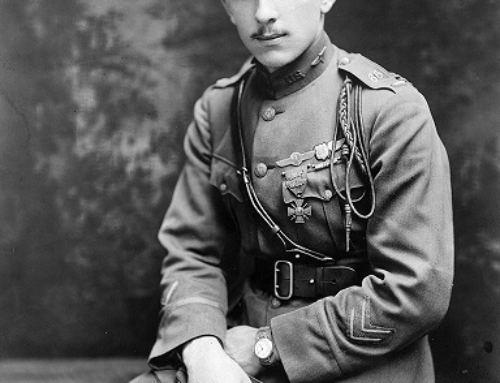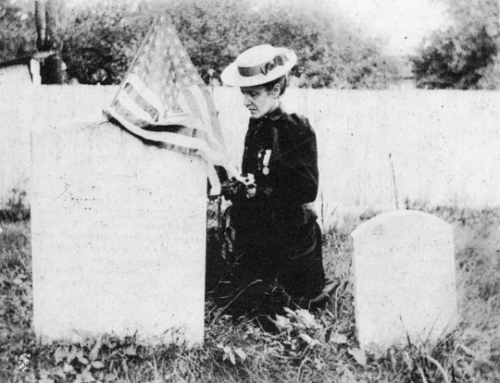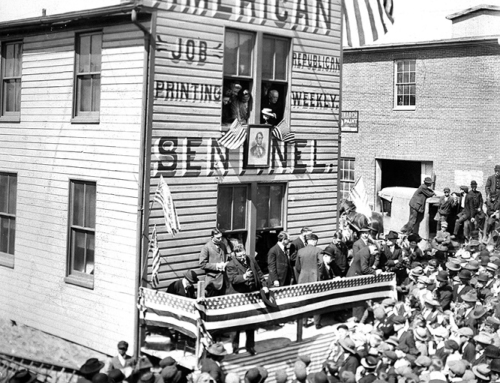While we associate paintings with art museums, most history museums also have them. These are usually family portraits or works by local artists. HSCC has both. But, while paintings are common, they are uncommonly difficult to care for.
Paintings are very complex objects. A traditional painting is constructed, in order from bottom to top, of the support, ground, paint, and coating. The support is usually a wooden frame called a stretcher. The ground for most paintings is canvas. The canvas is attached to the stretcher with keys (flat triangular wedges, traditionally wooden) in the corners to adjust the tension of the fabric and to prevent bulges and creases. The ground provides a smooth surface for the paint. The paint on top of the ground can be a very thin single layer or multiple layers. On top of the paint, there is generally a coating. The coating, synthetic or natural resins, is used to provide saturation and to protect the paint underneath from dirt, abrasion, and moisture.
As paintings age, all of these parts can deteriorate. The keys fall out, allowing the stretcher to move. The canvas expands and contracts with changes in temperature and humidity, and stretches and sags. The paint layers will crack from the movement of the canvas. The coatings often darken with age and absorb dust and dirt, obscuring the original colors and details in the painting.
Recently, one of HSCC’s paintings underwent conservation treatment for all these problems. The painting is a portrait of William Winchester, Jr., son of the founder of Westminster and the man who sold Jacob Sherman the land on which the Sherman-Fisher-Shellman House was built. Conservator Heather Smith of Maryland Art Conservation performed the treatment. The back of the canvas was cleaned, new keys installed, and the tension on the canvas corrected. Deformed areas of the paint layer were flattened and the surface of the painting cleaned. A synthetic varnish was applied to protect the surface. Losses to the paint were infilled on top of the varnish so they can be removed if necessary in the future without damaging the original paint layers.
At the same time, conservator William Lewin was treating the frame. Damaged gesso was consolidated and losses infilled. The gilding was gently cleaned and the filled areas painted to match.
The two pieces were reunited and the painting re-hung above the mantel in the Dining Parlor of the house.

In this image, the painting has been removed from its frame but treatment has not begun. The wrinkles in the canvas are noticeable at the top and the bottom is obscured by a milky layer of old varnish.

This detail image shows the condition of the painting with half of the varnish removed.

Conservator Heather Smith removes old varnish from the surface of the painting. The work is done using solvent on a cotton swab.
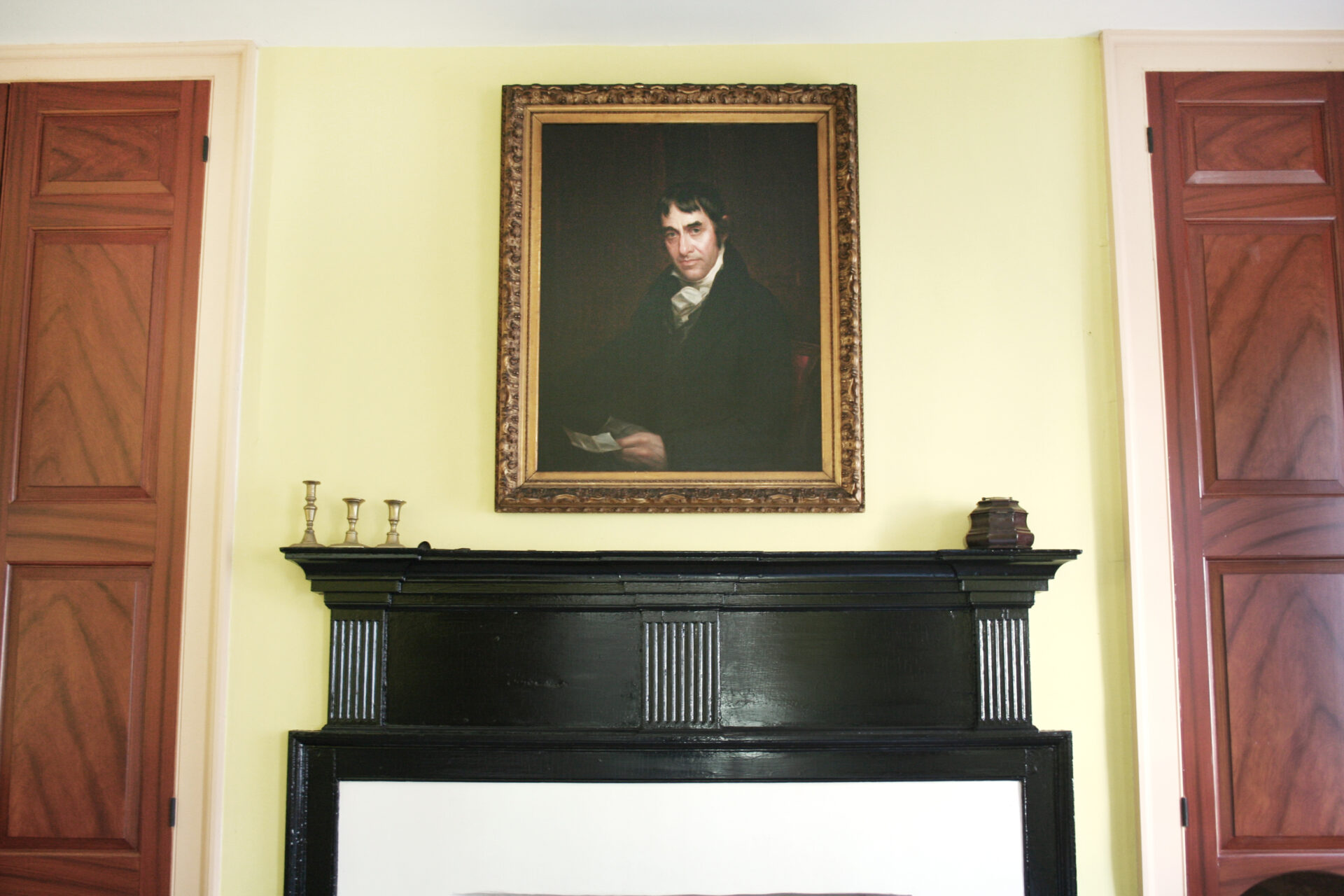
The conserved portrait resides over the mantle in the dining room of the Sherman-Fisher Shellman House
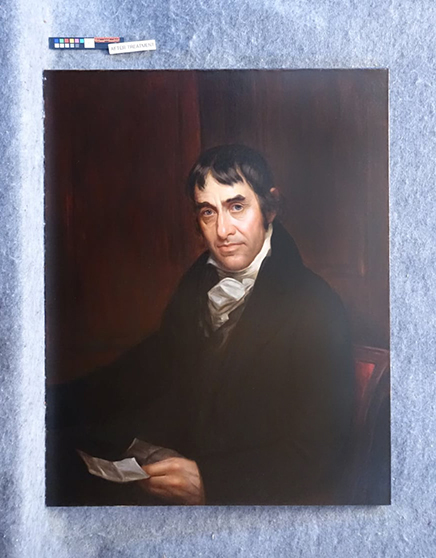
At this point, the painting has been cleaned and losses infilled. The details of the paneling behind Winchester, the chair on which he is seated, and his hand are now visible.

